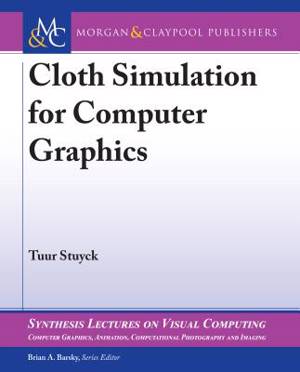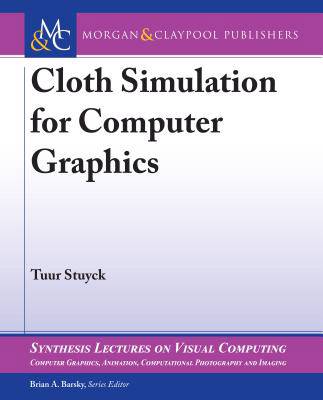
- Retrait gratuit dans votre magasin Club
- 7.000.000 titres dans notre catalogue
- Payer en toute sécurité
- Toujours un magasin près de chez vous
- Retrait gratuit dans votre magasin Club
- 7.000.000 titres dans notre catalogue
- Payer en toute sécurité
- Toujours un magasin près de chez vous
Description
Physics-based animation is commonplace in animated feature films and even special effects for live-action movies. Think about a recent movie and there will be some sort of special effects such as explosions or virtual worlds. Cloth simulation is no different and is ubiquitous because most virtual characters (hopefully!) wear some sort of clothing.
The focus of this book is physics-based cloth simulation. We start by providing background information and discuss a range of applications. This book provides explanations of multiple cloth simulation techniques. More specifically, we start with the most simple explicitly integrated mass-spring model and gradually work our way up to more complex and commonly used implicitly integrated continuum techniques in state-of-the-art implementations. We give an intuitive explanation of the techniques and give additional information on how to efficiently implement them on a computer.
This book discusses explicit and implicit integration schemes for cloth simulation modeled with mass-spring systems. In addition to this simple model, we explain the more advanced continuum-inspired cloth model introduced in the seminal work of Baraff and Witkin [1998]. This method is commonly used in industry.
We also explain recent work by Liu et al. [2013] that provides a technique to obtain fast simulations. In addition to these simulation approaches, we discuss how cloth simulations can be art directed for stylized animations based on the work of Wojtan et al. [2006]. Controllability is an essential component of a feature animation film production pipeline. We conclude by pointing the reader to more advanced techniques.
Spécifications
Parties prenantes
- Auteur(s) :
- Editeur:
Contenu
- Nombre de pages :
- 121
- Langue:
- Anglais
- Collection :
Caractéristiques
- EAN:
- 9781681734132
- Date de parution :
- 24-08-18
- Format:
- Livre relié
- Format numérique:
- Genaaid
- Dimensions :
- 191 mm x 235 mm
- Poids :
- 430 g







